[vc_row][vc_column][vc_column_text]
Deep(er) Thoughts on the Headhunter Fly Line
We wanted to design a line for us. For Headhunters.
A couple days ago we published the Headhunter Fly Line Review. As I thought about that blog, I recognized that I left out the Deeper Thoughts on how we felt about fly lines including what we truly wanted the line to behave like.
A fly line that Finished Strong
Finishes Strong. Some call this turning over well. That line really turns the fly over. When casting good streamer lines that is a component of design that I’m sure line manufacturers desire. A turnover that does not kick. That does not finish too strong.
A line that turns over well was a design component that we did not want to miss. And the reasoning behind this concept was our belief that the only time the caster can actually control the fly line is when you are tight. Sans Slack. The only time.
You gotta be tight to place the line, the fly, on the desired target, every time.
After you pull a loop into the line on your forward cast, when it is flying through the air from aft to fore, you do not have control. You are not attached for that moment. It is flying, flinging, moving rapidly hopefully towards your target.
This is the point where many anglers give up and hope. They fling it at the rising trout area. Sometimes it lands in the correct spot, but it mostly does not. (See Guessing below)
You control the pulling movement forward, towards the target, aiming it at the rising trout, stopping the rod (a movement that many need to improve on, the actual stopping of the rod not parallel to the water, not decelerating) in the direction of the rising trout.
The next thing that happens is the line straightens in front of you. This moment, this nano-second, is the line finishing strong.
This moment is real, real important.
When the line is coming tight, straight, taut, the loop has unrolled, it is straightening out in front of you…once again for the second time during the fore-stroke, you have an opportunity to move the line, to place the fly where you intend.
And that is important when Headhunting, when casting at specific targets. The moment you come tight, the line straightens, you can move the line, the fly, wherever you want. An example is the reach mend or cast. That is a secondary movement beyond the cast. It is those movements, moving the line and fly, to a specific spot you intend. In short, ACCURACY. When you are tight on the line you can move it up, down, sideways, and so forth. You can move the line wherever you want to. Accurately.
After you come tight on the fore-cast you have over 1 second to make a change before the flies lands on the water. And that time is important for your perfect placement of the fly.
You choose where the fly is placed. You, the caster, gets to choose.
Consequently a line that finishes strong is damn important for dry fly anglers.
And, the wind blows here. So coming tight, finishing strong, and controlling the outcome of the fly line and fly, is damn important for dry fly successes.
Known Outcomes are important in dry fly fishing. Since we do not condone shooting fly line during a dry fly cast, Known Outcomes are important. And casting a static amount of line, a line that finishes strong, was imperative for us when thinking about, designing, and testing the Headhunter Fly Line.
Simply put, if you cannot control the fly line, dictate where the fly is placed, then we have failed. We were determined to bring a fly line to market that you could control. And it must finish strong, for you to control the outcome of each and every cast.
A line that casts well in the wind
See above.
A line built for a Specific Use
There are lots of fly lines on the market. We chose not to make a fly line for all anglers. There are plenty of them out there.There are very good general use fly line options from many line producers.
A line for Headhunters, by Headhunters.
We are Headhunters. We are dry fly anglers at heart. We wanted a dry fly specific fly line made for 30′-60′ casts in the wind.
You can buy very specific streamer lines with differing densities depending on water depths, sink rates, etc. A nymphing line is imperative for tossing heavily weighted nymph rigs.
We wanted a dry fly line for our specific needs. For your specific needs. For Headhunting.
Casting with purpose
This is a fly line that you cast with purpose. For those guys out there not headhunting, lobbing nymph rigs outside the boat, this is not for you.
When fishing for rising trout, you must cast with purpose. The goal is to catch the trout. To fool the fish. And lobbing casts, shotgunning, guessing casts at rising fish is not what we intend to do when Headhunting.
You don’t look at the deer, then close your eyes and guess your shot out there. Do yah? That is what many anglers do when casting at rising trout. They guess…
Many anglers like to guess every cast at rising fish. They pull in different amounts of line and start the cast with a different amount of line off the tip every cast. They shoot line every cast at rising trout. That is guessing the fly out there. Known Outcomes while casting with the Headhunter Fly Line. This line is for fella’s who exhibit this behavior. This line is designed to lift you up brotha. For you to break through.
So many anglers hope that the fly lands near the trout, and hope that the trout eats the fly…a day filled with hope. I like Hope. I hope the sun will shine. I hope I will win the Lotto. I hope the wind won’t blow too hard. I hope the chef does not overcook my steak. I do not integrate hope in my dry fly game. I dictate what happens. I cast with purpose.
We consciously chose to make this fly line for those who dictate outcomes. A line that casts with purpose.
For those who choose to catch more dry fly trout. This line is made for you to move to the next level. If you mail it in, guess every cast, shoot line at rising trout, drop your rod tip on the fore-cast, and decelerate…this line is made to break the mold and allow you to improve.
Because if you do the above, you will not progress. You will not get better. The Headhunter Fly Line is a line that can help you move forward. To leave those bad habits and unimpressive results behind you.
You have to participate with the Headhunter Fly Line. And that was important to us. A line not for beginners. There are other lines out there for that specific skill set.
So as I have outlined here, we thought about it. We wanted a line that you could, and would, and should cast with purpose.
User Friendly
If it is not user friendly, we have failed. We integrated an easy to understand color scheme. The Lime Green portion means you are in the Performance Zone. The Casting Zone. The fly line casts the best when you are in that zone. Easy. If the Blue Sky Camo is inside the rod tip, there may not be enough line out to load the rod properly. Easy. Lime Green means go ahead and cast. Blue Sky Camo means you have pulled too much line inside the rod tip.
Also included in this thought process was a running line that does not tangle as often. A larger diameter running line keeps the tangles to a minimum.
Deep(er) Thoughts about the HH Fly Line
Remember this line is made for a specific use. It is made for technical dry fly casts in the normal distance range of 25′-60′. This is not made for short casts. It is not made for extra long booming blind casts with grasshoppers. The Headhunter Dry Fly Line is made for accurate, casts at distance, with common environmental distractions that this fly line overcomes with ease.
We were quite conscious of the beliefs above. We wanted to stay true to the cause. To the design. To the dry fly line. To Headhunters.
And what we got, from RIO of Idaho Falls, was exactly what we set out to do. The Headhunter Dry Fly Line.
[/vc_column_text]
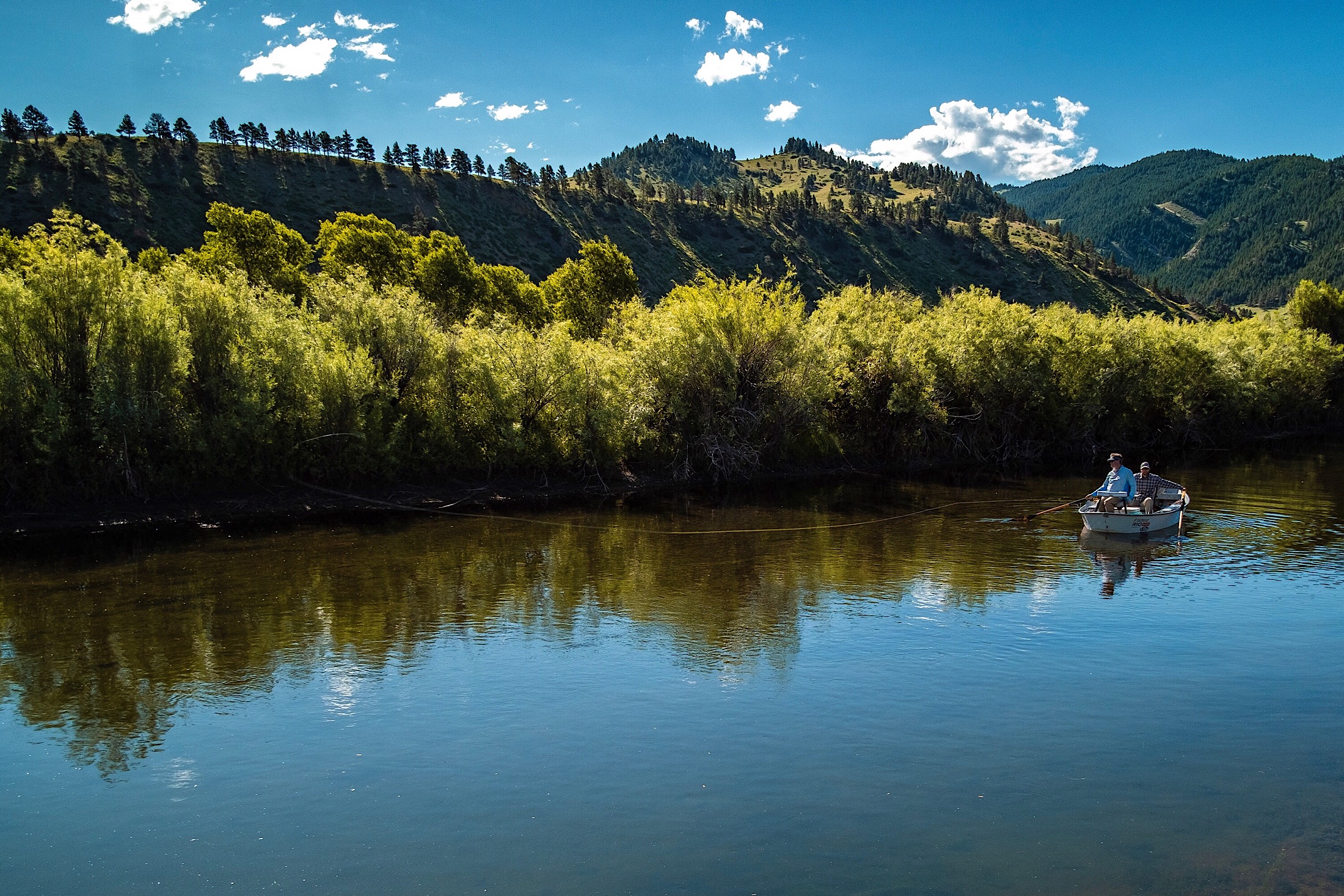
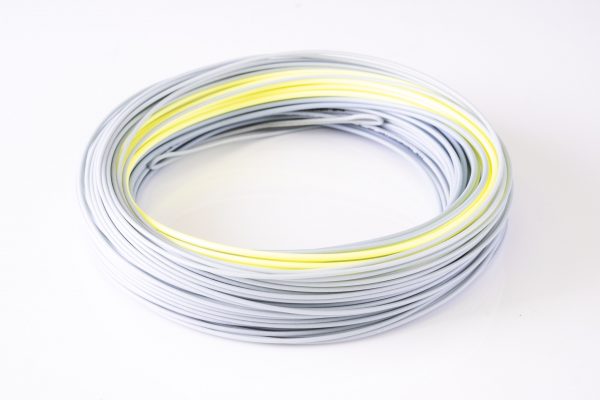
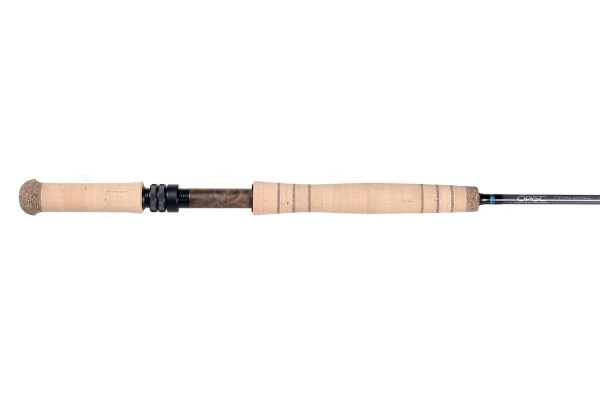
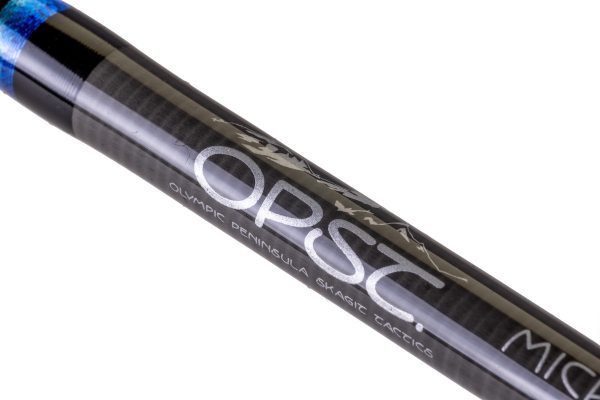
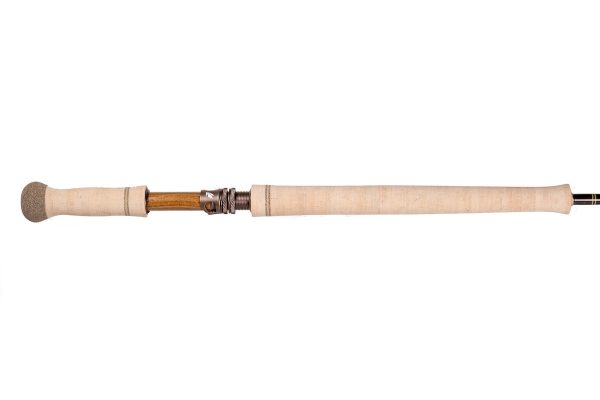
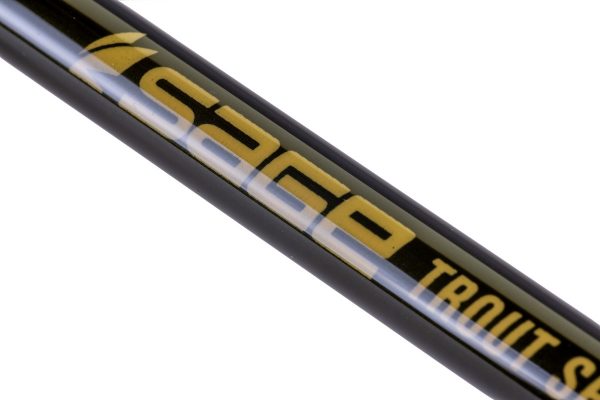
GULP . . . the quiet sound a trout makes when sipping your Dry-Offering; and also the sound my throat makes after reading, 1st, the foot-notes of the ‘HH Fly Line’ Trailer and in seeing the Trailer (video)! Then today, strangely, the book version comes out, or is todays deep(er) insight the “script” for the Full Movie Version . . . coming soon to a theater near you ?. Mark I wonder sometimes what keeps you up all night . . . I believe “this” could be part of the answer! Dedication such as this is highly commendable. If only we had “Representatives,” representing us with this kind of dedication . . . hmmm?
NOW it’s time to rework, perhaps(?), the RIO “short take AD writeup ” for this
Line. I’ll just say this, much of your explanation OF the Line is directly related TO the Caster (and his/her abilities). As is the case for any Line. Most Quality Dry Fly dedicated Lines (there are 3 others I can think of) have similar design characteristics . . . the HH Line caries these “characteristics” to a different level – how’s that for being “politically correct”? I think you should expound on the “trailer” – a longer tutorial on the casting strokes for various conditions; calm, windy, gusty w/rain . . . etcetera! You have a “gift” in the Videography Dept.! Perhaps in collaboration with Simon at RIO? Just a thought. Hope your able to get some useful sleep time now that you’ve been able to tell . . . “the rest of the story,” behind the “Line”. Stay cozy & warm . . . gotta feeling it’s gonna be a long cold winter this year . . . then abruptly end with Summer (very short Spring, maybe?). Ah . . . Climate Change . . . don’t get me started! (smilie-face)
So here we are. I have all the tools needed and an elementary (maybe middle) school education as to how to catch MO trout on dries.
Now we found out can I execute. Set up the same way every time, is my precast routine ingrained in muscle memory so that I do not have to think about it. Make the first cast, forgot the reach, a little short, do not skate the fly, let it drift past be patient. Keep watching the pushups. Second cast a little longer, remember the reach but not there yet. Think, plan and execute.
Third cast, good reach, in the line now just need Eat,Eat,Eat,Eat and all those 15 minutes on Sundays sitting in a folding chair in the backyard casting to a coffee cup don’t seem so crazy.
Nice lay- out of the line action during the cast. I think fly anglers need to understand/feel that rod load….. and to always know that your line will always follow the path of the rod tip…. and to your great point redirecting line direction even towards the end when that loop begins to straighten. Cast at that fish! This is the other key idea – vision getting that fly close to that boil …. a few feet max above it….take control of that. Why would you think a nice long drift before the fly is close to that fish would be a good idea. Too many things can go south with that strategy – mainly micro drag and spooking that fish.
Mark & John, is the line appropriate for softer action, dry fly rods like a Winston WT/IMG, fiberglass or bamboo?
Yes indeed Rick. While we see fewer of those rods on the water these days, the Headhunter Dry Fly Line matches appropriately with Bamboo…I have fished it on a 4, 5 and 6 wt and carries well. Have not fished it on IM6 or the WT. Glass just fine. A nice match. And, as always, if our line and your rod don’t match…unconditional guarantee on all HH products.
The “Art” of the casting stroke AND final delivery end game, in conjunction with water, weather and rising fish (or pod of) situations (conditions) is what will “seal the deal,” otherwise known as ‘The Art of the Deal’ – ugh . . . did I really say that? (laughing profusely to myself).
Semi-seriously, never take fly fishing to the “serious” level, you, as an “amateur” may have regrets(?). Now DON’T ask Tiger Woods . . . he always takes his “casting” stroke (at the ball) Very Seriously, as he should, cause it could be worth millions! WE however, should just enjoy the “game”. Practice Practice Practice . . . sure, why not? Cause I have OTHER things in Life I care about. Tossing a fly line across the yard, only to land on who knows what (with 2 dogs & a cat . . . all sorts of wild birds laying about the grass & twigs . . . !? I’m only speaking of not ME, cause I don’t have those things. At 68, I’ve created many “bad habits,” some actually doing with Fly Casting for FISH, (inject humor any time) I’m guessing, 40 yrs. worth, interspersed with thoughts of my Golf Game – till the back operation (stopped enjoying golf in 2010)! I choose to combine my “practice” with the “Fishing” now. I figure if I continually “practice” the wrong things, not realizing I’m doing so, then I’ve just compounded some Frustrations On the Water! I’m a dawdler . . . I enjoy taking my time exploring the section I’m on until I feel I can do no further “good” with it. Kind of like stopping to smell the roses approach. Others, usually Guides with a Client Agenda to meet, do various “hit-n-run” tactics.
KNOWING Right and DOING Right . . . well, not as easy as 2+2=4. Which is why, for ME, I usually try to take about 2 – 3 minutes, which seems like 30, to warm up the stroke and make mental notes on technique – off to the side, away from where I intend to fish, but landing my line on the water. Pod fishing should & IS different than stalking 1 . . . but then again that 1 could easily turn into (oh my god) a pod. Then what? You’ve already alerted “them”. Thus the good reasoning for a LONG Leader + Tippet and a “long” Drift Approach. Least that’s my take on such things. I approach “technical” fly fishing/casting like being a P.I. (private investigator/”dick”- more humor if it pleases?). All this talk of Technical Fly casting/fishing the Dry Fly has got me re-interested in getting back to it next year, as opposed to my love for swinging, drifting or pounding with wets & streamers. Oh my gosh . . . looks-here, I’ve created a Short Story without realizing it . . . NOW I know how Mark does it ! And I didn’t stay up all night thinking about it ! (insert smile emoji)
This sh*t is pure gold and your fly line is the stuff dry fly dreams are made of. Keep killing it and I can’t wait to get up there.
Thanks Rich. Appreciate it. Let us know when you are headed north. I’d wait till spring tho!
Big fan of this line as I have posted before. Not sure about the instruction to NOT shoot line on the final cast though!!! Here on the Delaware we shoot line all the time and then pinch and mend.
Well yes Chris. But I reserve that kind of that talk to the very few. It’s like shooting 3 point shots. Not for everyone.
Will trade shorter casts closer to the rise over long drifts ….. long drifts (and casts) waist time and lost opportunities … this is common horse sense but so often missed by anglers caught up in the long cast / drift mind set unless, for some reason, you think you cannot get closer to that fish or if wading cannot get closer.
Truth John. Yessir. Be patient. Get closer. Make good, short, drifts.
Fished HH line on my 4wt with Bradon in August. Really helped me hitting the “sweet spot” blind casting terrestrials. Looking forward to late Spring PMDs. See you in June!